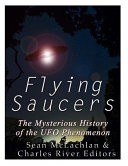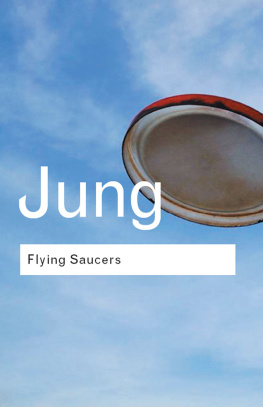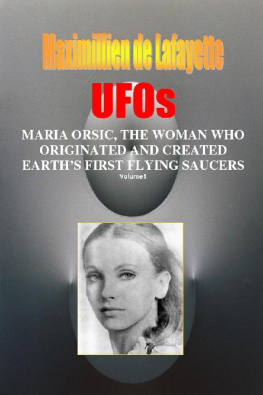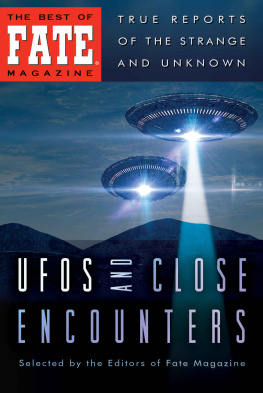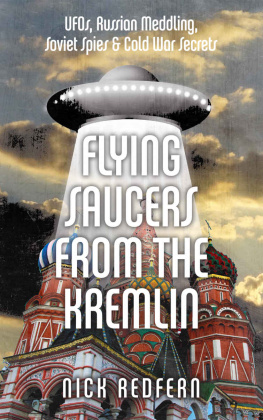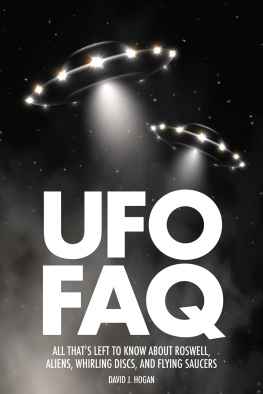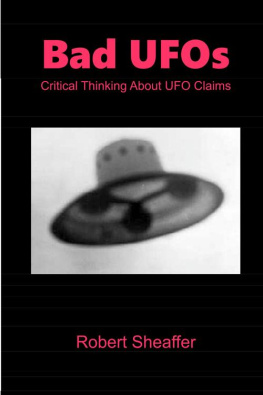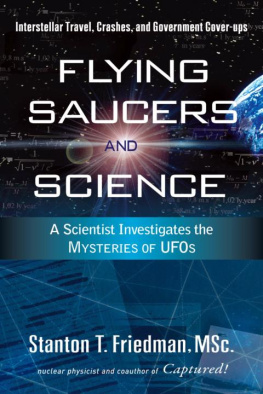Sean McLachlan spent many years working as an archaeologist in Europe, the Middle East, and the United States. Now a full-time writer, hes the author of many history books and novels, including the post-apocalyptic series Toxic World , which starts with the novel .
Introduction

The October 1957 issue of Amazing Stories magazine
Flying Saucers
The point is that the idea of space vehicles shaped like flying saucers was imprinted in the national psyche for many years prior to 1947, when the Roswell incident took place. It didn't take much stretching for the first observers of UFOs to assume that the unknown objects hovering in the sky had the same disk shape as the science fictional vehicles. Frank Wu, illustrator for science fiction magazines
When people think about unidentified flying objects (UFOs), they tend to think of flying discs piloted by gray beings with large heads and enormous eyes. They tend to think that these sightings only started relatively recently and that belief in UFOs is some sort of modern religion brought on, perhaps, by the very justifiable fears of a nuclear age. But a study of the phenomenon quickly reveals that humanity has been seeing UFOs since the beginning of recorded history and perhaps a lot longer than that.
Modern Ufology focuses on mysterious lights on Ceres or tales of alien abduction, but this wasnt always the case. Looking at how belief in the UFO phenomenon has changed and how it has stayed the same sheds new light on how culture and belief changes over time. You dont have to believe humans are actually being visited by aliens from another planet to recognize the importance of UFOs in human society. Any widespread belief that endures for centuries is worthy of study, and as always, cases exist that cant be explained away as simple belief
Everyone is familiar with theories about UFOs, or flying saucers as they were often called then, but even this name dates back only to 1947. Before that time, they were called ghost rockets or ghost airplanes or ghost airships. Before the age of flight, the flying objects were called various things such as flying chariots. No matter what terminology is used, every generation has clearly had its own belief that mankind is not alone.
For example, few things in American history are as controversial as the Roswell Crash. The one undeniable fact is that something happened near Roswell, New Mexico, in 1947, but beyond that, the facts become murky as memories and evidence lose their luster over the years. That said, the impact of an unidentified object continues to mystify residents, visitors and the curious, and it has not only put Roswell on the map but has kept it there for thousands of tourists. Nonetheless, skepticism about the official version of the incident prevails, and a countless number of people continue to believe the American government covered up a crash landing by aliens. As John B. Alexander, Ph. D., a former project manager at the Los Alamos National Laboratory and consultant to the CIA, put it, Attempting to come to any complete resolution of the incident is a fools errand, as whatever the truth may have been has become so distorted over time that facts have merged inextricably with fiction.
Flying Saucers: The Mysterious History of the UFO Phenomenon looks at the unidentified flying object craze. Along with pictures of important people, places, and events, you will learn about flying saucers like never before, in no time at all.
Chapter 1: Early Sightings
While the term flying saucer was coined by journalists after the famous 1947 sighting by Kenneth Arnold, who claimed to have seen several objects that looked like saucers flying near his plane, and the term UFO is modern Air Force jargon for unidentified flying object, people have been seeing strange flying crafts for thousands of years in all parts of the world and in all civilizations. Often, ancient sources explain these sightings in terms of religious visions or apparitions of supernatural beings like the Vedic accounts of flying golden chariots or the flying canoes of some Native American legends.
Unidentified flying objects were just as common during the Middle Ages. Agobard, archbishop of Lyon under Charlemagne in the early 9th century A.D., had to save four people from an angry mob that wanted to stone the people to death because the mob had seen the individuals descend from ships that flew in the sky. The four travelers, three men and a woman, told wild tales of being raised up in these ships and shown many marvelous places. Agobard dispersed the mob by saying that what the travelers claimed was impossible, and thus they could not be sorcerers.

A 16 th century illustration that seems to depict flying objects
The archbishop was a bit of a skeptic and wrote various treatises debunking popular superstitions. In his work De Grandine et Tonitruis ( On Hail and Thunder ) he wrote about the origins of weather and dismissed the popular belief in tempestarii (weather mages). Nefarious sorcerers summoned aerial sailors in their flying ships to cause storms in order to steal crops from honest farmers fields before spiriting them away to the fabled land of Magonia. This belief was a form of early witchcraft hysteria. While local farmers couldnt catch the aerial sailors, they could accuse their neighbors of being tempestarii.
On September 24, 1235, the Japanese general Yoritsume was on campaign and grew concerned about some strange lights he and his men saw at night. These lights would move around performing loop-de-loops. He sent his most educated advisors to find out what was going on, and they came back with the explanation that the wind was making the stars sway. This was perhaps the first scientific investigation of the UFO phenomenon although it reached a rather unscientific conclusion.
Unexplainable sightings did not stop with General Yoritsume. Christopher Columbus also saw strange objects in the sky. While voyaging to what he thought was India on the Santa Maria , he recorded the following in his journal entry for October 11, 1492:
After sunset he [Columbus often wrote of himself in the third person] steered on his former course to the west. They made about 12 miles each hour and, until two hours after midnight, made about 90 miles, which is twenty-two leagues and a half. And because the caravel Pinta was a better sailor and went ahead of the Admiral it found land and made the signals that the Admiral had ordered. A sailor named Rodrigo de Triana saw this land first, although the Admiral, at the tenth hour of the night, while he was on the stern castle saw a light, although it was something so faint that he did not wish to affirm that it was land. But he called Pedro Gutierrez, the steward of the kings dais, and told him that there seemed to be a light, and for him to look: and thus he did and saw it. He also told Rodrigo Sanchez de Segovia, whom the king and queen were sending as veedor [royal inspector] of the fleet, who saw nothing because he was not in a place where he could see it. After the Admiral said it, it was seen once or twice; and it was like a small wax candle that rose and lifted up, which to few seemed to be an indication of land.








